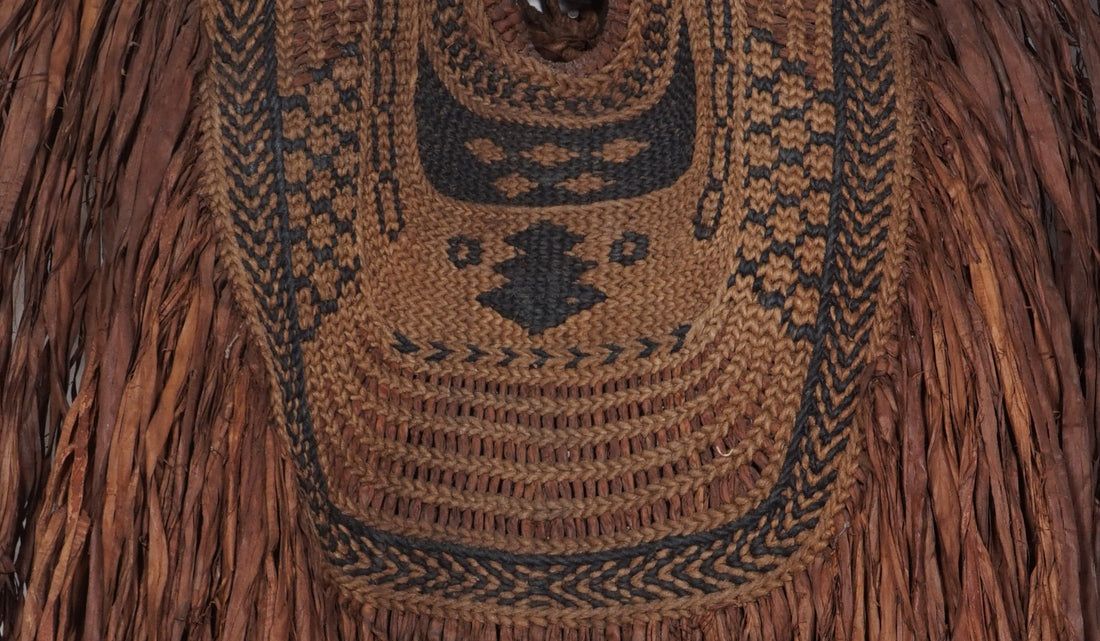
All images courtesy of Gallery Kojima.
Gallery Kojima in Tokyo recently held an exhibition of Japanese ‘mino’ and ‘bandori’ workwear and accessories. ‘Mino’ means a raincoat, it was traditionally made mainly of various local natural fibres. In pre-modern times people used to create them using materials that surrounded them such as rice and wheat straw, reed, bark, vines, and seaweed. The garments were waterproof and breathable and decorative versions were used in celebrations. Traditional mino are articles of outerwear covering the entire body, although shorter ones resembling grass skirts were also historically used to cover the lower body alone.

‘Bandori’ is the name for a type of back-protection for carrying heavy bundles, used as an important tool for agriculture and mountain workers in Japan about 100 to 150 years ago. A ‘rooster’ is a type of backrest that is carried under the backpack and was developed in the Shonai region. Particularly decorative types were used in rituals and were called ‘Iwai Bandori’.


Decorative bandori were used when a man was introduced to a woman for marriage. An old custom in the north east of Japan was for a man to make a bandori as an expression of his personality. Items with high decorativeness were sometimes presented to women through matchmakers when carrying marriage tools for weddings and when introducing a match.
The mino and bandori items in the exhibition can now be viewed online and some are available to buy.
Gallery Kojima mainly deals in the work of Japanese modern and contemporary artists, but also collects and sell works of all ages and countries on the basis of its concept, “Esprit Sauvage (the spirit of the wild)”. This includes a permanent collection of Japanese tribal antique textiles.
For more information, visit www.gallery-kojima.jp


